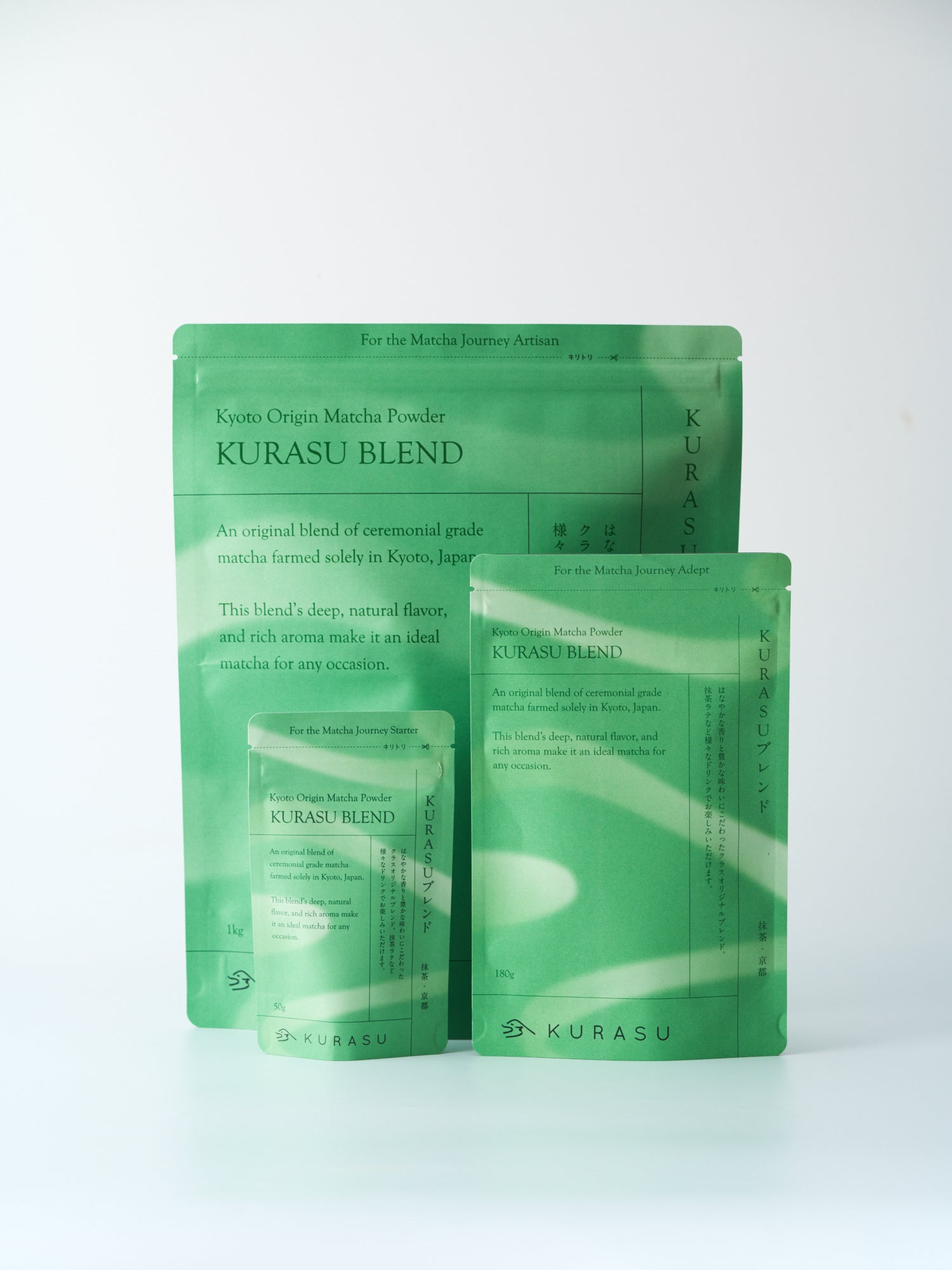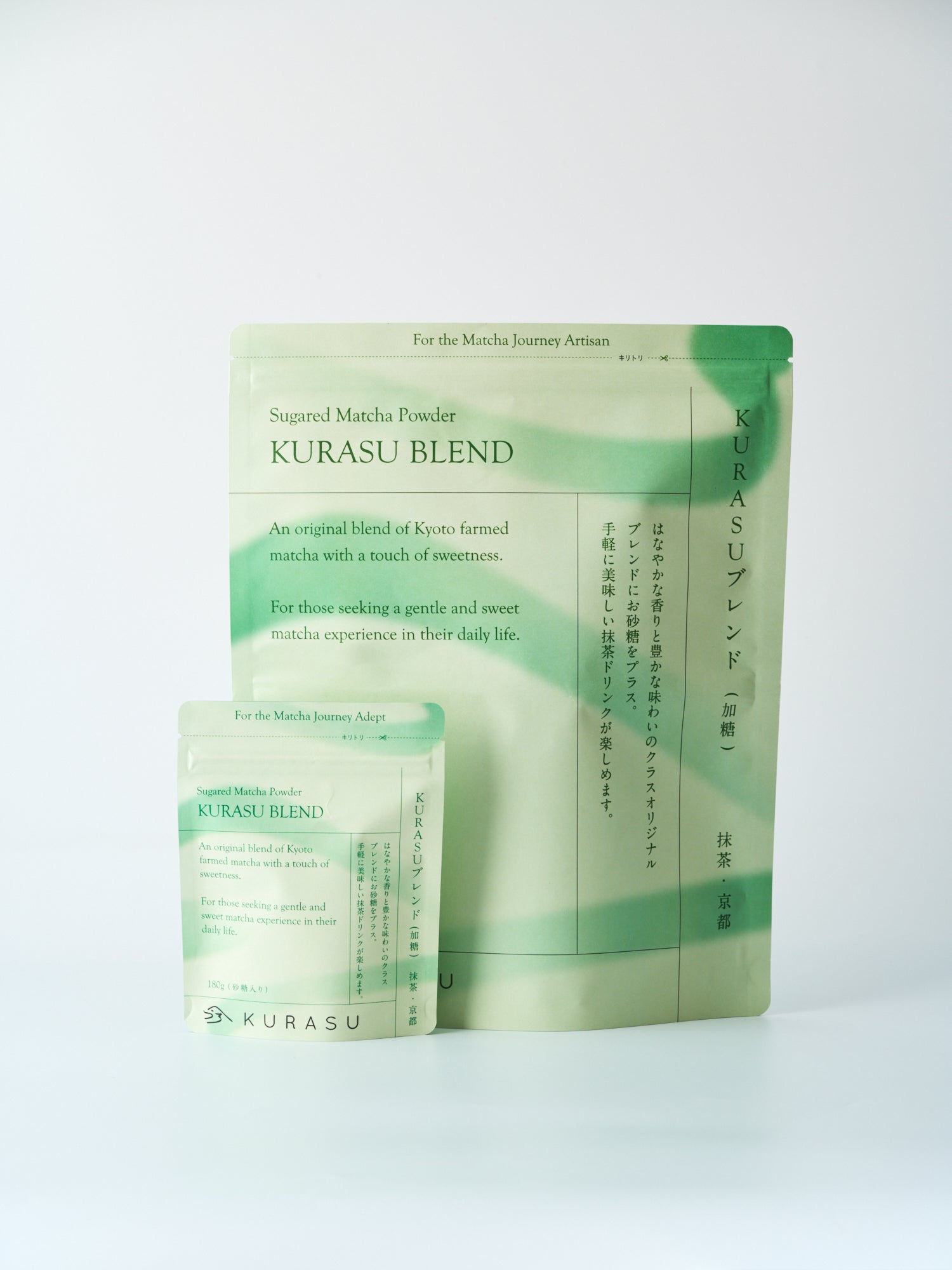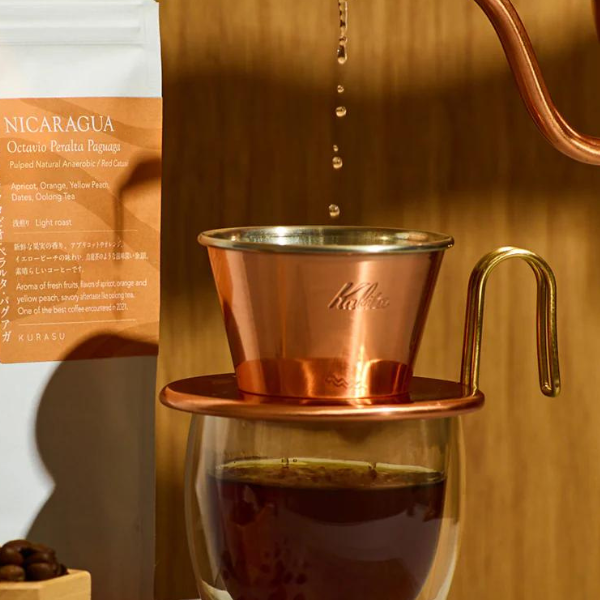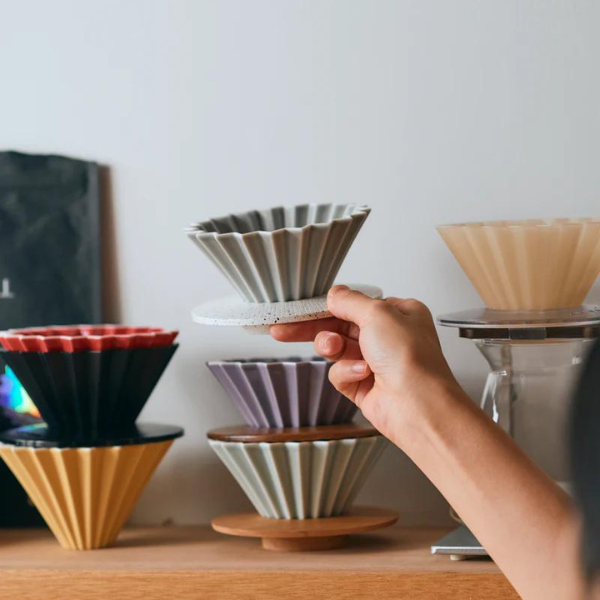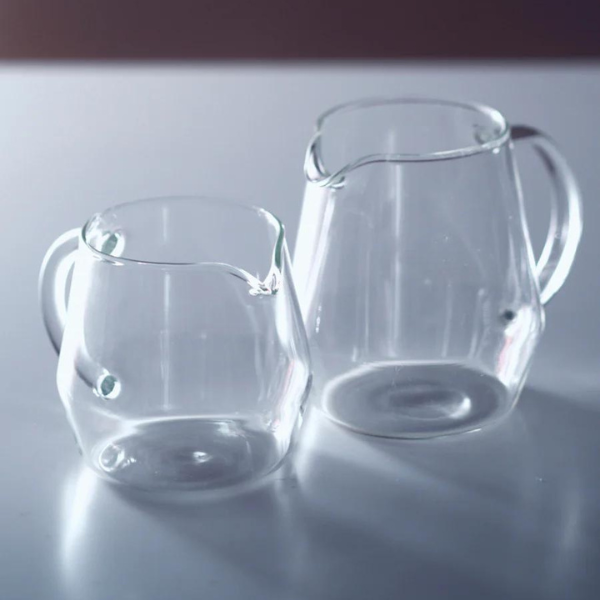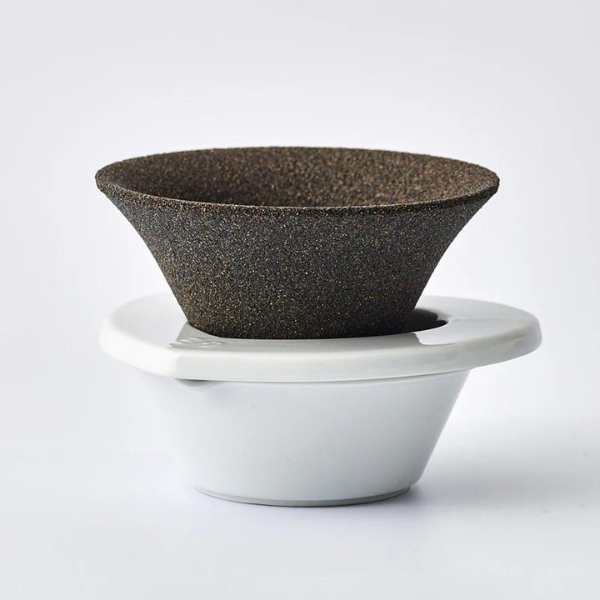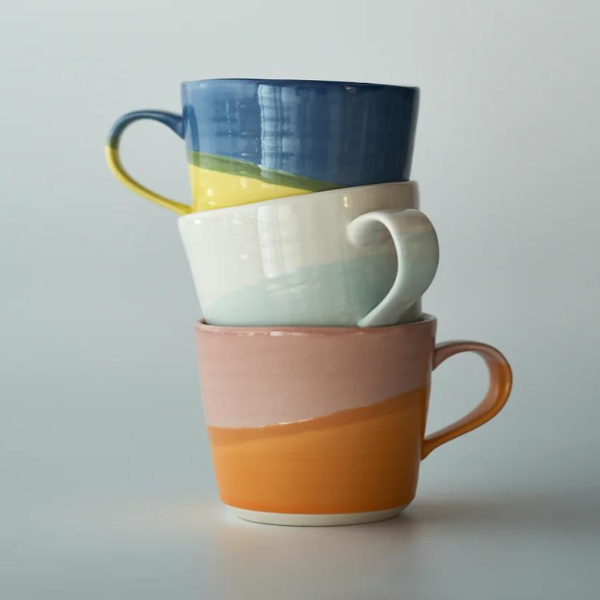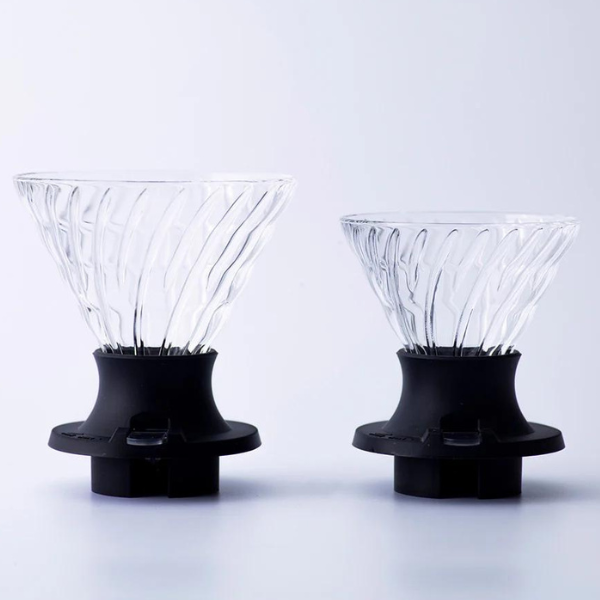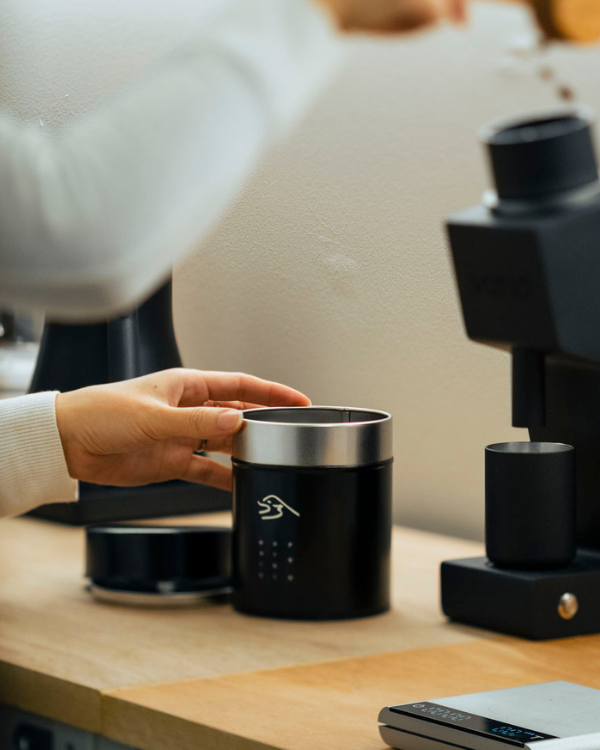Hi everyone, it’s Hitomi.
I’ve been having tomato based soup for most of my meals trying to be healthier- one day I took a tupperware of it with me to work, and Kume-san saw that and praised me for my bravery of commuting with a liquid lunch. d-(^^)-b
Anyways, back to the topic. Many of you may have started new hobbies to make the longer time staying at home more enjoyable, and I heard from many customers too that they started brewing coffee at home- and they often said they’d love to have coffee equipment at home but have no idea what to get.
So this time I thought it’d be a good idea to talk about how to choose coffee equipment for your home, and how to take care of them.

First, ask yourself “how much coffee do I drink?”
This is the first thing I ask my customers who visit us to buy coffee equipment.
I ask if they have 1 cup a day, 3-4 cups per day, or a week, to decide what’s best to recommend.
How many cups they usually brew at once is also important- as well as where and when.
Some prefer light roast, and the other dark, or maybe they like both.
Perhaps they have a specific thing they like or dislike about coffee and the brewing process.
There are so many different aspects of coffee brewing and what they want to achieve, so that’s where I start- I ask them to look back and think about their preference and habits.
The next point that is equally important is the budget. Some of you may be wondering how much they need to spend to get a whole set of coffee brewing gears.
Sometimes we have a customer who starts from setting a budget, say, within 100 dollars.
Setting a budget for coffee equipment is actually quite difficult as the price range varies, but for today’s article I’m going to introduce some of the most affordable lineups and several other examples of setups from what we have here at Kurasu.
Budget
The main factor that affects the price of coffee gears are their material and how they are made.
The most affordable material is, without a doubt,plastic.
The great things about plastic items are that they aredurable, light-weight, portable and affordable.
Other major materials used for coffee equipment are stainless steel, porcelain, other metals, glass, and wood- there are so many to choose from!
The biggest different material makes is thermal conductivity.
How the dripper conducts and retains the heat affects the final brew, and different shaped drippers also drip coffee differently and make a difference in the final cup.
I will need another whole day to talk about dripper’s materials and how they make the difference, so maybe another time.
Let’s have a look at the items that are available at Kurasu, at different price points and compare.
------------------------------------
◆Dripper
¥450~ Hario V60 Dripper Plastic 01
◆Paper Filter
¥170~ Hario V60 Paper Filter 01(40 sheets)
◆Kettle
¥1430~ Hario V60 Drip Kettle Air
◆Server
¥1760~ Kalita Wave Server 300G
◆Grinder
¥3300~ Hario Coffee Mill Ceramic Slim
◆Scale
¥6600~ Hario V60 Drip Scale Black
◆Coffee Beans
¥870~ House Blend Dark
------------------------------------
These are the most affordable, lower price range lineups at Kurasu.
The total price of the above is ¥14,580.
If you have a budget of ¥15,000, it’d be enough☺︎
If you like, you can also get:
・Thermometer
These would push the budget limit, but these are something you don’t necessarily need but can be added whenever you feel the need later on.
The essentials for coffee brewing are:
・Dripper
・Paper Filter
・Kettle
・Coffee Beans.
If you already have a kettle with a thin spout, you don’t have to worry about buying a new one.
You wouldn’t want to spend too much from the start, and you can even use a cup as a substitute for a server- think how much you’d like to go for, and plan how much you can spend.
What to look for in each items
To successfully choose what’s best for you, you’ll need to look into what size and capacity work the best for how and when you brew coffee.
The most common size for a dripper is 1-2 cups or 2-4 cups (Some brands have bigger options as well.)
First, pick the size depending on how much coffee you usually make at once, and then look for an item that achieves the element you look for in a final cup.
You can ask yourself, for example, “do I usually brew at home?”, “do I want to brew coffee when I’m out and about or travelling?”, or, “would I take the brewing equipment to my office?”, etc. Then, you will gradually get the whole picture and the list of things you would want in your coffee equipment.
Let’s dive into each category of items you need for your perfect coffee brewing!
Dripper
The single most important item for pourover brewing- a dripper.
For some of you who don’t know how to choose a dripper, let me give you a very simple explanation on how drippers work.
Drippers have ridges called “ribs” on the inside. Different drippers have differently shaped or sized ribs, and that affects the water flow rate which makes a big difference in how the final cup tastes.
Most drippers can also then be categorized into 2 major shapes:
◆Classic, Flat-bottom Dripper
A classic shape you’d often see in coffee machines and many cafes, the flat-bottom drippers are one of the most commonly seen drippers.
Some are looking like triangular prism on the side, and the others are looking more like a flower pot- they have varied numbers and sizes of the dripping holes, but generally speaking they tend to hold water slightly longer, then have a steady, slow dripping rate compared to the cone-shaped drippers.
This structure contributes to a stable and repeatable brew, and less likely to be affected by how you pour the water in.
Flat-bottom drippers are reliable gear to get for manual brew beginners.
◆Cone-shaped Dripper
Compared to flat-bottom drippers, cone-shaped drippers have one big hole in the middle that lets the water flow faster and straight down. How you pour gets directly reflected on how the water flows, which is tricky, flexible and fun all at the same time.
Achieving the desired, repeatable brew requires a manually controlled pour including how much and how fast you pour- if you are looking for a versatile tool you can try many different recipes and techniques, cone-shaped ones are the best.
Cone-shaped drippers generally make clearer cup compared to their flat-bottom counterparts, and if you love a fruity cup, they are the ones for you.
Kettle/Drip pot
I asked Kurasu’s staff members to fill in a little questionnaire to write this article, and it was quite surprising for me to find out that kettle was the most selected item as an answer to the question “what was the most difficult item to choose when you were buying your first set of coffee equipment?”
I’d say that there are two important points you’d want to focus on and that are; if it’s easy to handle/pour, and if you want a built-in thermometer or not.
Kettle can be a tricky one to know at stores what it actually is like to use, but I recommend you at least holding them in your hand, moving them around to get the feel as much as possible before buying one.
If you are planning to boil the water in the same kettle, you may want to check what type of heat sources they are compatible with as well.
Another important factor is the temperature setting feature.
Nothing beats the convenience of being able to set and adjust the temperature by a degree simply by pressing the button, and it saves time too if you don’t have to bring the water all the way up to boiling temperature, then wait for it to cool down to a desired temperature.
Especially since you get different results with different water temperatures even by one degree, I recommend getting a kettle that has a temperature setting if you like to be precise.
If your kettle does not have the temperature setting, boil the water first, then use a thermometer to get the temperature you need.
Grinder
Coffee grinder, sometimes also called coffee mill, was also chosen by many of our staff members as an item that was hard to choose.
I found choosing a grinder the most difficult too.
You can find manual grinder and electric ones, and if you drink lighter roast or not so much of a muscular type, choosing an electric grinder is probably better.
The reason why I say this is that light roast coffee beans are harder and more dense than dark roast coffee, and require more force when grinding.
We sometimes have customers trying out the grinder at our shop, and are surprised at how much force it needs, then pick an electric one in the end.
Of course, many people love that feel of grinding through coffee beans by hands, so it’s all up to your preference. I would say that the time we spend grinding coffee is also a very fun part of the process of brewing coffee.

When you pick a grinder, the most important thing you want to check is how uniform the coffee grinds are in size.
Judging what’s acceptable and what’s not is very difficult especially if you are new to this, so try asking the shop staff about the grinder you are looking at, or ask them to let you actually grind some coffee beans with it and see how it performs.
If you know a friend who owns a grinder, ask them about it, and maybe ask them to let you try using it.
Another great solution which turned out not very well known is that you can ask a coffee shop to grind the beans you buy there. You can start with having your coffee pre-ground, and also ask them to give you some recommendations on grinders.
Although the best way to enjoy a fresh cup of coffee is to grind right before you brew, investing in a grinder is still worthwhile.
Scale
By far the most popular answer to the question, “if you were to choose only one, ultimate item you would recommend someone to buy, what would it be?” was “a scale”. I totally agree! It will make coffee brewing so much more fun and enjoyable.
As I always say, in blogs and in conversations, coffee is so sensitive to change, like a baby. One degree difference in temperature and 0.5g difference in weight make all the difference, and I adjust them little by little to achieve my ideal cup everyday- and it will be rewarded.
Coffee brewing championship is basically the ultimate version of that adjustment, and it’s very fascinating to watch.
Using a scale when you brew is worthwhile especially if you are new to coffee brewing. If you follow the recipe to a gram, you are more likely to get good results. Then you can try different recipes by different people, or recreate a recipe that worked very well in the past- it broadens the horizon of your journey.
Scales you can find at coffee shops usually come with a timer too, which is very convenient and useful as well.
Cleaning & Maintenance
I sometimes get questions about how to clean and maintain coffee equipment.
It’s always best to follow the instruction manual and each manufacturer’s suggestions, but keeping your equipment clean before putting them back on the shelf never goes wrong.
It varies depending on the roasting level, but all coffee contains oil. If the oil remains on the tool it oxidizes, and it will affect the flavor of your next brew negatively, and it may even cause rust.
If it’s washable, make sure to wash, and if not, make sure to wipe or dust well after each use.
Grinders should be brushed and lightly cleaned after every use, and on top of that, dismantling to parts to give a thorough annual cleaning is ideal.
Conclusion
Here’s the three most important things to consider when you first buy your coffee equipment:
◆Size/Capacity
◆Budget
◆Purpose of Use
I’d say that knowing the purpose of use is especially important- if you know your preferences and lifestyle, set the budget to decide on the size and material, it will help the choosing process.
It’s always a great idea to ask cafe staff and baristas too- they usually have a favorite and recommendation, so simply ask for their advice (^^)
Kurasu’s recommendations

◆The Ultimate Basics
・Hario V60 Dripper Plastic Clear 01 ¥450
・Hario Mini Drip Kettle Tetsu Kasuya Model ¥3,850
・HarioV60 Paper Filter (40 sheets) ¥170
The very basic essentials to start brewing at home.
You can use a mug instead of a server to keep the setup economical.
A perfect set for a beginner.

◆A Warm Touch of Wood
・Hario V60 Glass Dripper Olive Wood 01 ¥3,850
・Hario Server Olive Wood Handle 400ml ¥4,950
・Halo Dripper Stand ¥5,100
・Tsukiusagi Slim Pot (0.7L) ¥4,200
・Hario Coffee Grinder Smart G ¥4,400
The setup that warms up your kitchen with a touch of wood- a perfect selection for a cozy home.

◆Practical and Professional
・Wilfa svart aroma Coffee Grinder ¥24,200
・FELLOW Stagg EKG Kettle ¥23,650
・Kalita Wave Dripper TSUBAME 155 Copper ¥11,550
・Hario Metal Drip Scale ¥11,000
・Kalita Wave Server 300G ¥1,760
If you are looking for the great practicality, a precise brewing that tastes as good as what you get from a barista, these are the ones.
They are the most practical and most precise, and some of the best gears you can get for home use.
And the total cost is...let’s not talk about it.

If you are new to coffee brewing, you may find all of these processes a little overwhelming. I hope this article will help- there is a first time for everything.
To write this article I asked our baristas about what their first experiences were like, and it was so refreshing to hear about their early days- and it took me back to mine too.
It was a great opportunity for me to reflect on that precious time, and freshened my mind up all over again- and that’s the feeling I’d like to always have every time I brew coffee.
We started on the rainy season early this year- and when it’s over, here comes a blazing summer!
Cold brew coffee would be nice on a hot day, but then I heard people talking about “milk brew”, and now I’m curious.
What does it taste like?
The only way to find out is to make some myself.
Next Up: We tried the milk brew everyone’s talking about.



